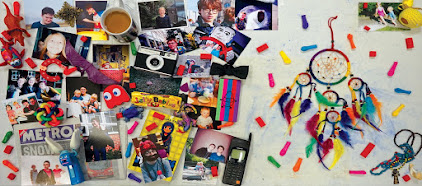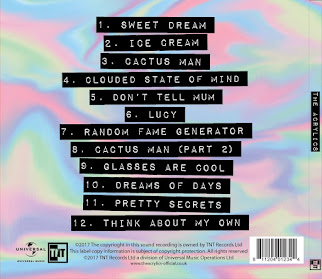Our short 'film clip,' themed around an accident and focusing on continuity. Click to play.
1) What is the story of the video?
In the video, two students walk around the same corner from opposite sides, and because they are both paying attention to different things rather than where they are walking, they walk right into each other, apologising profusely afterwards. One student is on his phone, the other is looking through a pile of school stuff.
2) How is continuity/narrative flow being attempted?
Narrative flow is attempted in quite a few ways. The most obvious way is utilising the in-camera editing to make the shots appear continuous- each shot contains an event that carries on from the last (or in some cases during the same time-frame as the last,) for example when the focus switches to another character the original character continues their movement realistically, as seen when they come back into view. The actual act of walking had close attention paid to it, as the actors attempt to land on and continue from the same foot between shots, and walk at a realistic and regular speed, i.e. a form of match-on action. The 180 Degree Rule is also obeyed, with one character moving from right to left and the other from left to right throughout the whole segment, with the walls serving as an anchor point and a master shot to reveal this.
3) Is full continuity achieved? If not, what/where are the mistakes?
Unfortunately, full continuity is not achieved, and the clip contains multiple problems and mistakes not limited to just continuity. One major contributing factor to the faults in narrative flow is the inherent problems with the medium of in-camera editing; it is hard to iron out mistakes between shots as you cannot re-film without deleting all shots chronologically after the re-filmed shot, and it is harder to be precise when stopping and starting, so run-on and run-off filming cannot be eliminated. However, still more problems were caused by the filmmakers. For example, the shot order is quite jarring in reference to framing- a mid-shot jumps to a wide long-shot very quickly. Shot/reverse/shot was not followed either, and thus it is possible to note slight differences between shots, such as a characters moving back a few steps between shots, and slowing down randomly so as not to move too far and put the next shot in jeopardy. Additionally, one actor (in fact myself) looks at the camera right at the end.
4) In hindsight, what could have been done differently to improve narrative flow and tell the story more effectively?
If shot/reverse/shot would have been used, everything would flow much better due to removing the need for the actors to try and be in the perfect position during and between shots. However, this would also require manual editing, and with access to that the current set of shots would also be greatly improved, as shots that linger too long or even start too late can be cut down, and some continuity mistakes such as actors slowing down or moving around between shots could be cut also. Planning more thoroughly and allocating more time would also have improved things greatly- as it was there were no documents produced before hand such as storyboards and the like, and everything was done on the fly due to the time constraint of 20-30 minutes.




No comments:
Post a Comment